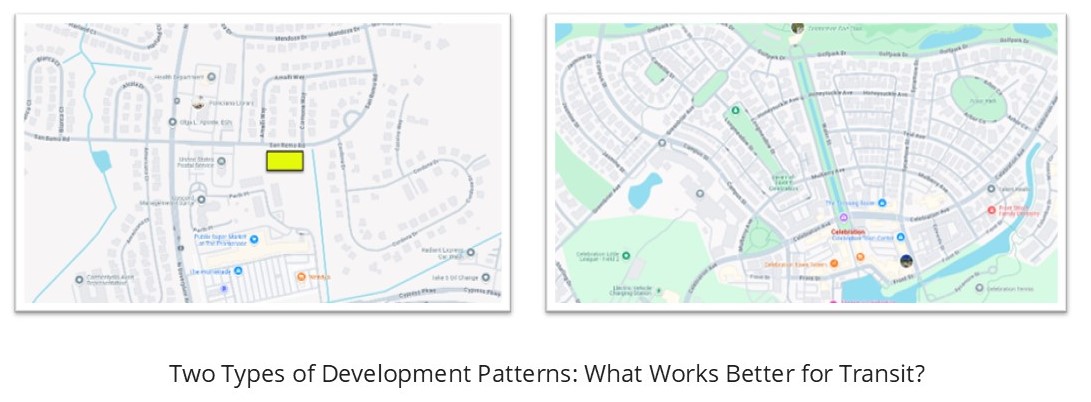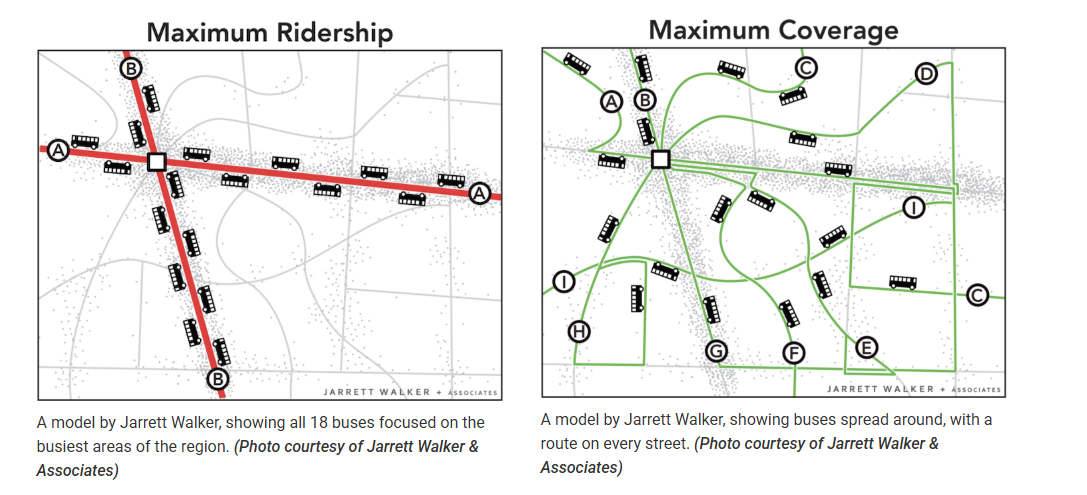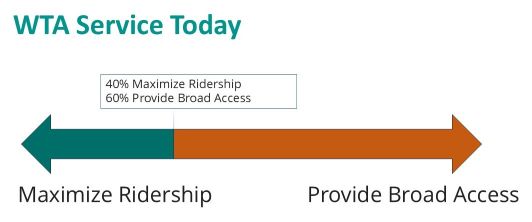The WTA Board of Directors is developing a new policy to direct how WTA allocates its service. This policy will be based on a specific goal to balance between "Maximizing Ridership" and "Providing Broad Coverage".
Many people assume that the primary goal for transit agencies is to grow ridership. However, agencies like WTA also provide "coverage" service that focuses on spreading out service across a large area so that there is a bus stop near many people. Spreading service out sounds great but it also means that service is spread thin. Bus service is infrequent and fewer people ride because it is not very convenient. On the other hand, if the goal is to get more people to ride, then it is important to focus service in areas with large numbers of people where it is easy to walk to a stop, and to provide frequent bus service. People are much more likely to use public transportation as there is less time waiting for a bus and the service is more convenient to use.
The two goals represent competing values that every transit agency balances, either by intent or default. The image below on the left shows a transit system that emphasizes Maximizing Ridership by having many buses on just two streets. The image below on the right shows a transit system that emphasizes Proving Broad Access by having few buses on many streets.
The goals of Maximizing Ridership and Providing Broad Coverage are in opposition: if a transit agency wanted to do more of one, it must to less of another. These goals can be viewed as a continuum:

Currently, WTA's service results in the continuum looking like this:
This is a map of how WTA's service looks today in reference to those two competing goals*:

* Frequent service is defined as corridors having at least 4 buses per hour or 15 minute frequency, which are WTA's Go Line corridors. Coverage service is defined as corridors having less than 4 buses per hour. These definitions are based upon the frequency level where most people find riding to be convenient, both in Whatcom County and elsewhere.
Not all areas can support frequent transit service equally well. A large number of people living or working in an area is needed to support frequent service. In addition, this area needs to be easily walkable so people can get to a stop. Compare these two images of the same scale below:

The image on the left has spread out development, many cul-de-sacs, wide streets, and fewer people compared to the image on the right. Transit serves fewer people and it is difficult to get to a bus stop. The image on the right has more people in a smaller area, streets connect to each other, and it is easier to walk to a bus stop (not to mention people are closer and have an easier walk to parks, shopping and other destinations). Thus, more people will be able to ride the bus and it makes sense to have more frequent service.
WTA does not anticipate having funds to spend on more service in the foreseeable future. Thus, if the Board decides to set a goal that changes the percentages, then it will impact where and how much service would be provided in certain areas of the community. Some people will have more service and some people will have less service. If a higher percentage of maximizing ridership is chosen, then Go Lines will receive even better service and/or new corridors will become 15-minute Go Lines. To do that, service would need to decrease in some areas and there may be routes that would be discontinued.






